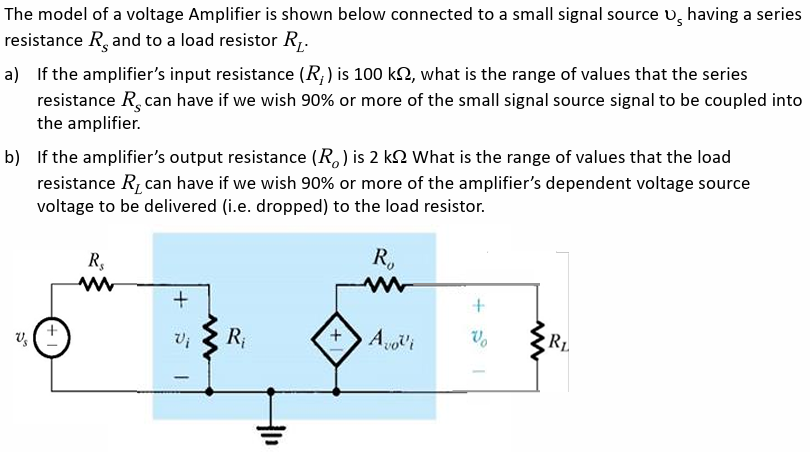The model of a voltage Amplifier is shown below connected to a small signal source vs having a series resistance Rs and to a load resistor RL. a) If the amplifier's input resistance (Ri) is 100 kΩ, what is the range of values that the series resistance Rs can have if we wish 90% or more of the small signal source signal to be coupled into the amplifier. b) If the amplifier's output resistance (Ro) is 2 kΩ What is the range of values that the load resistance RL can have if we wish 90% or more of the amplifier's dependent voltage source voltage to be delivered (i. e. dropped) to the load resistor.
